As we navigate through 2025, Canadian companies must remain agile and responsive to the evolving global landscape. The global economy faces tremendous uncertainty due to the tariff policies pursued by the new U.S. administration. Economic protectionism and trade tensions are leading to a global trade slowdown. Major central banks, once largely synchronized, are now taking varied approaches to managing their interest rates. This challenging trade landscape makes it crucial for Canadian exporters to diversify and increase productivity to adapt to the turbulence ahead.
You should also check out
With growing risks, Canadian companies face new challenges. EDC’s Global Economic Outlook offers insights to help you make better business decisions.
Here are three top trends EDC Economics will be watching in 2025.
1. Global trade uncertainty has reached its highest level in the past 25 years.
Trade uncertainty has surged to multi-decade highs following recent U.S. tariff announcements. The situation has escalated further, with the implementation of tariffs on imports into the United States. Surveys indicate that this surge in uncertainty, coupled with growing fears of a U.S. recession, is causing consumer and business confidence to fall. Fluctuating trade policies have disrupted companies’ investment planning, exacerbating economic instability. As the global economy struggles to adapt to these rapid changes, the overall pace of economic growth has slowed, raising concerns about a downturn.
This slowdown is reflected in global trade growth, which has been decelerating. In recent years, global trade has seen notable difficulties. It faced a steep drop during the pandemic but rebounded with record highs in 2022. In 2023, global trade in goods contracted by nearly 2%, marking the steepest decline this century outside of a global recession. The pandemic exposed vulnerabilities in global trade networks, prompting countries to reassess their dependence on foreign goods and services. Tariff threats have further strained trade relationships. As countries navigate these challenges, the future of global trade remains uncertain, with significant implications for both global and domestic economies.
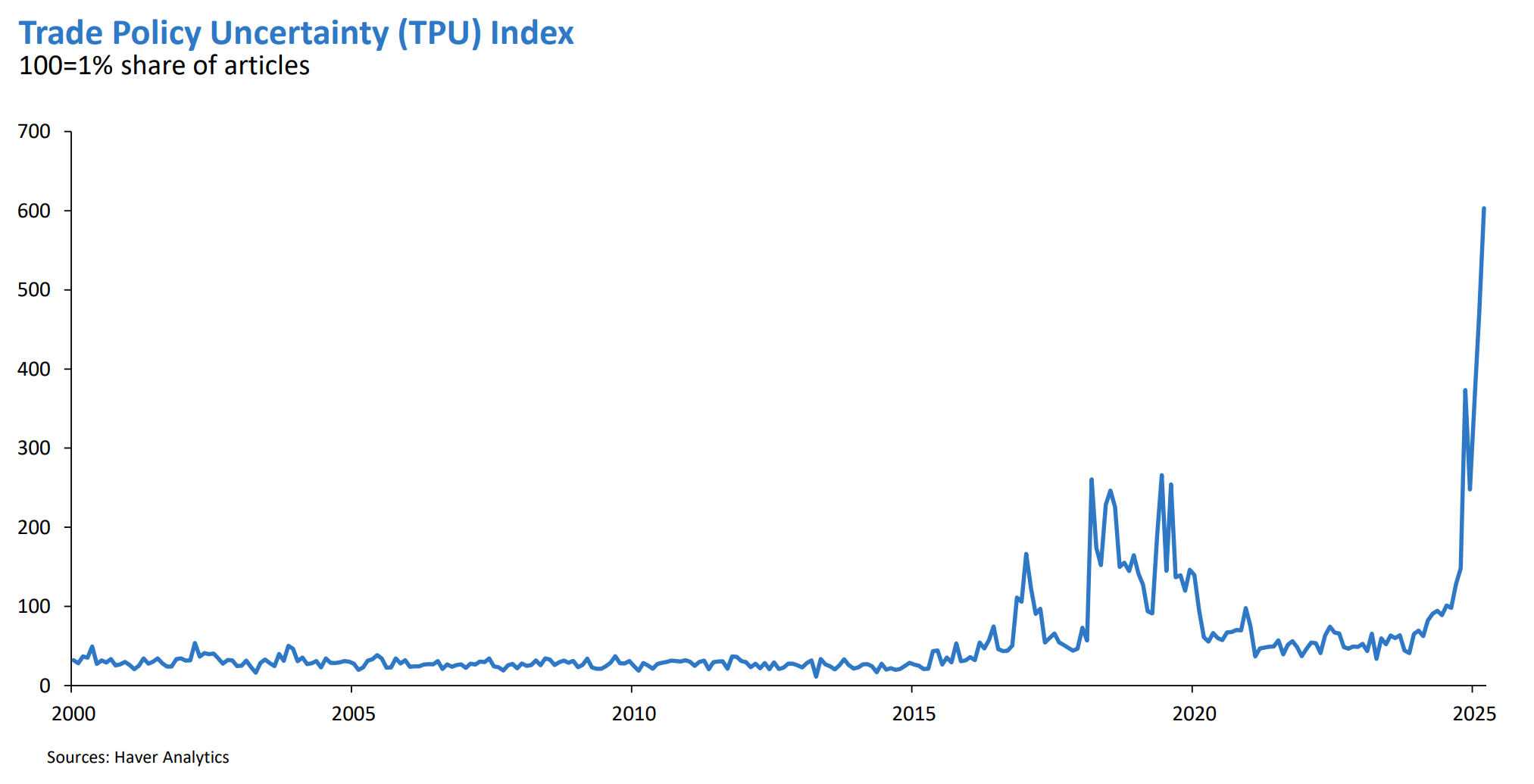
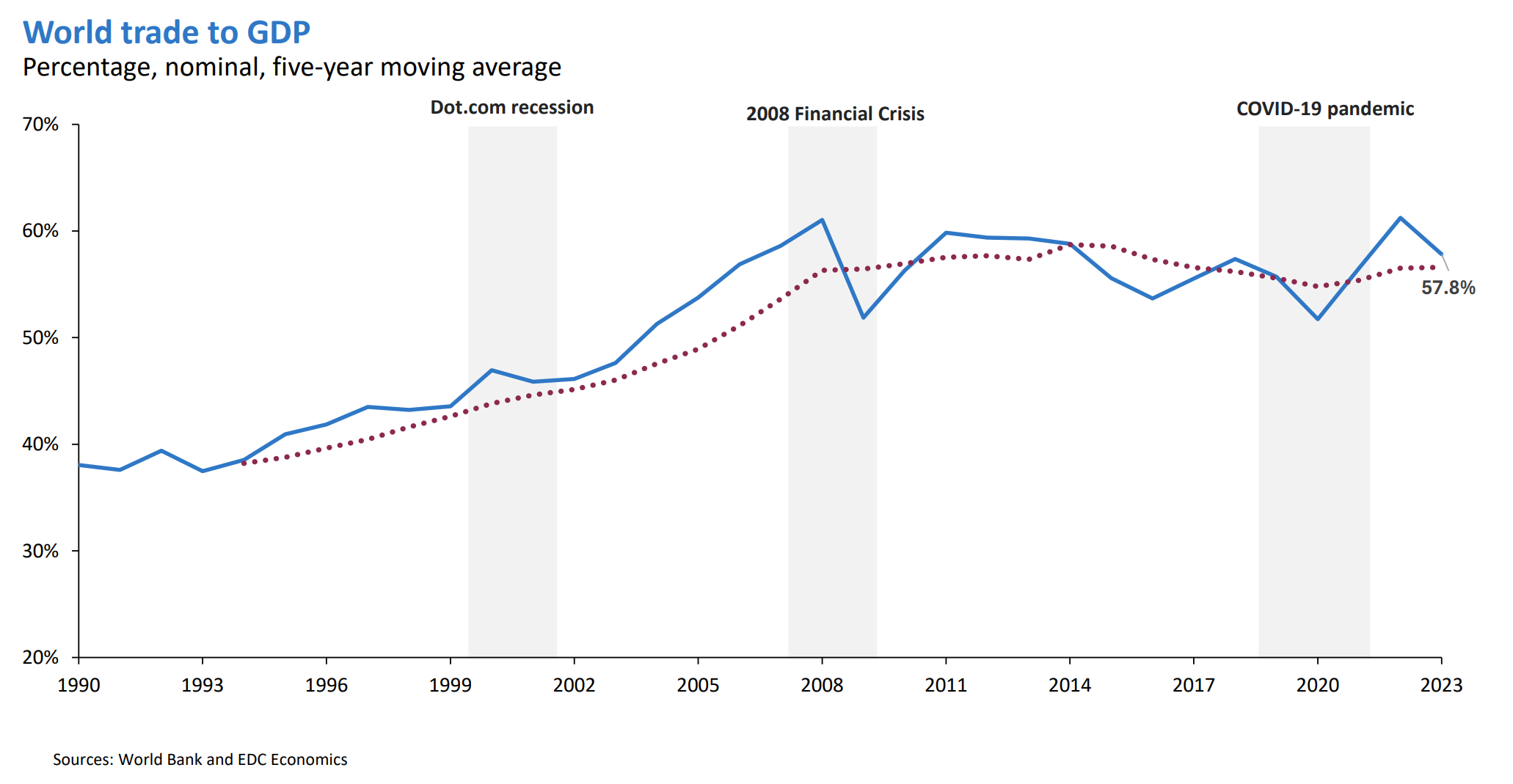
2. Central bank rate divergence and weaker Canadian dollar
Since mid-2024, the Bank of Canada has aggressively cut interest rates, reducing its policy rate from 5% to 2.75% by March 2025. In contrast, the Federal Reserve has maintained its policy rate at 4.33%, leading to a widening spread. Meanwhile, the European Central Bank has also implemented regular rate cuts, with five reductions since June 2024, leaving its policy rate at 2.5%.
These major central banks, which previously moved policy in lockstep, are now adjusting rates at varied paces. The U.S. has loosened its policy rate much slower compared to Canada, leading to a gap in the 10-year bond yield. This gap implies a weakening effect on the Canadian dollar. A weaker currency can cause inflation due to higher import costs from the U.S., significantly impacting business decisions, investment flows and the domestic economy.
The divergence in interest rates reflects differences in overall economic conditions. Canada’s economy has slowed significantly in the face of interest rate increases and weak domestic conditions. In contrast, the U.S. has continued to see strong consumer sentiment and spending, driving solid performance in U.S. real gross domestic product (GDP) growth.
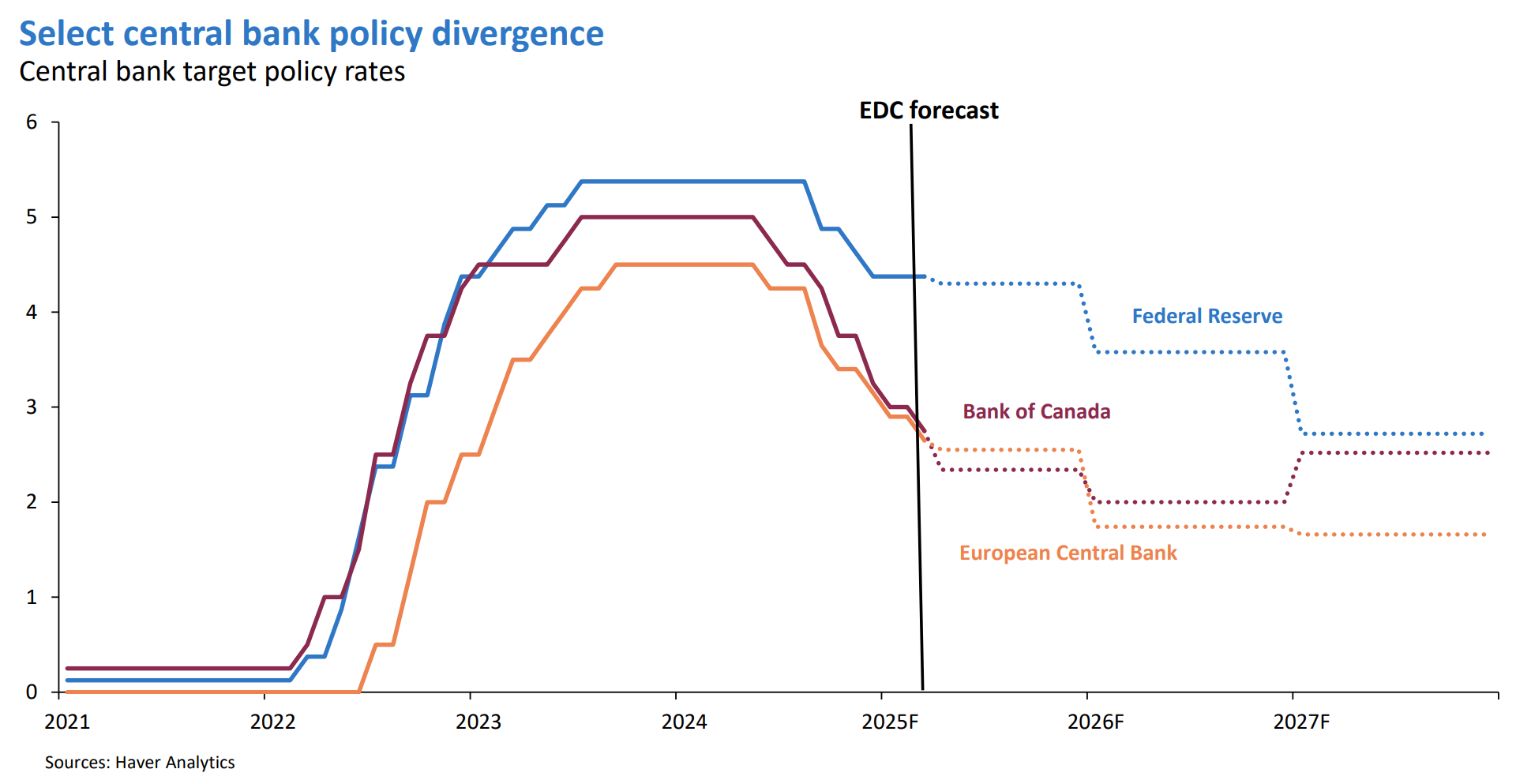
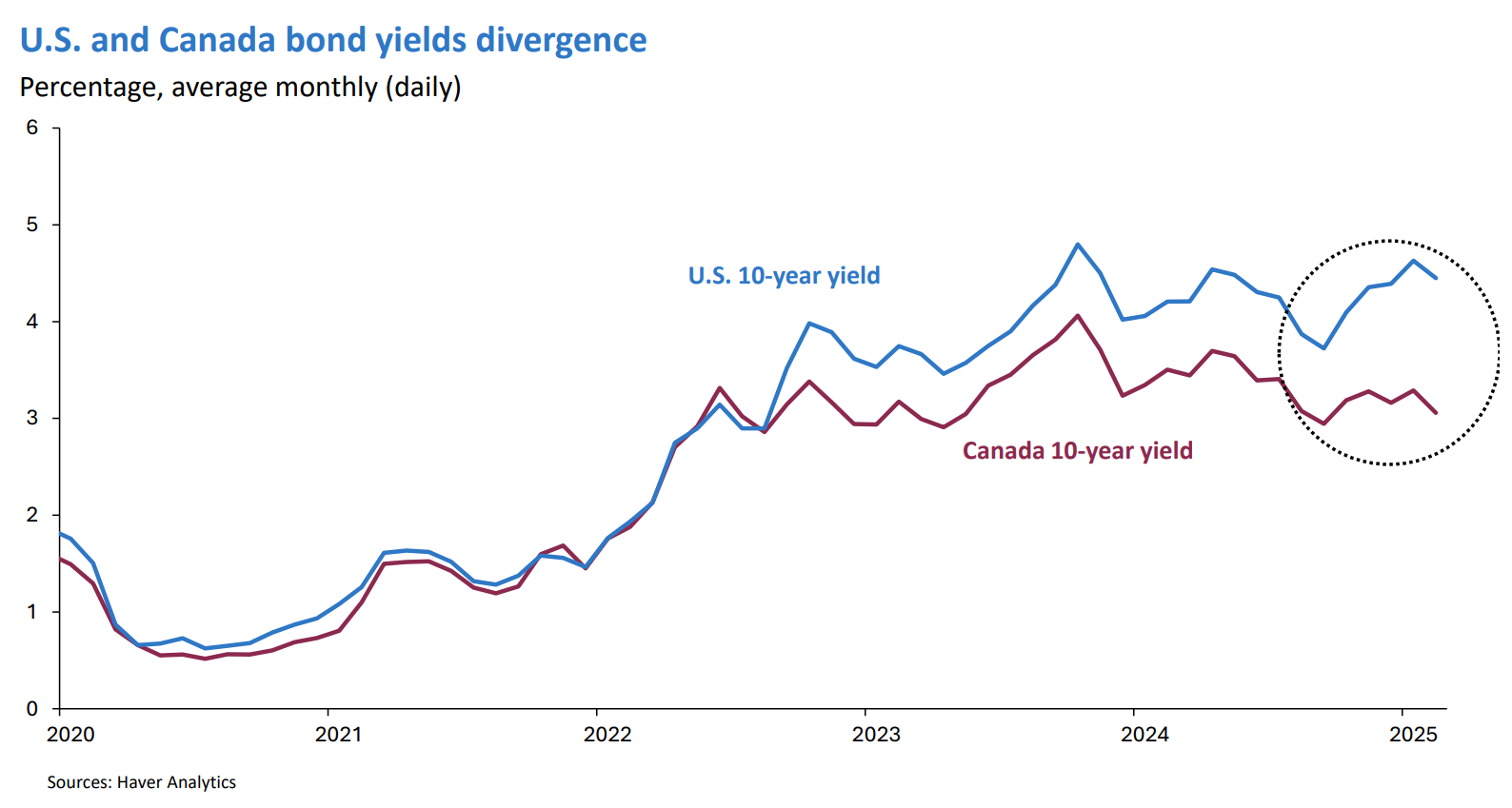
3. Fears of inflation start to soar
Fears of inflation in major economies, which had fallen from their peak in 2022, are starting to rise again due to tariffs. In Canada, inflation increased by 21% from January to March. Similarly, Mexico saw inflation rise by 9%, with further increases expected due to imposed tariffs.
While inflation in the U.S. and the European Union has remained relatively stable around 2.5% over the past six months, it’s likely to increase in the coming year. The uncertainty surrounding tariffs has dented U.S. consumer confidence and fuelled fears of inflation, with companies warning of higher prices ahead. In April, U.S. consumer confidence experienced its largest decline in the past five years, reflecting a broad-based downturn. U.S. inflation expectations for the next year have surged to their highest level since mid-2022, as consumers brace for higher prices from President Donald Trump’s planned tariffs.
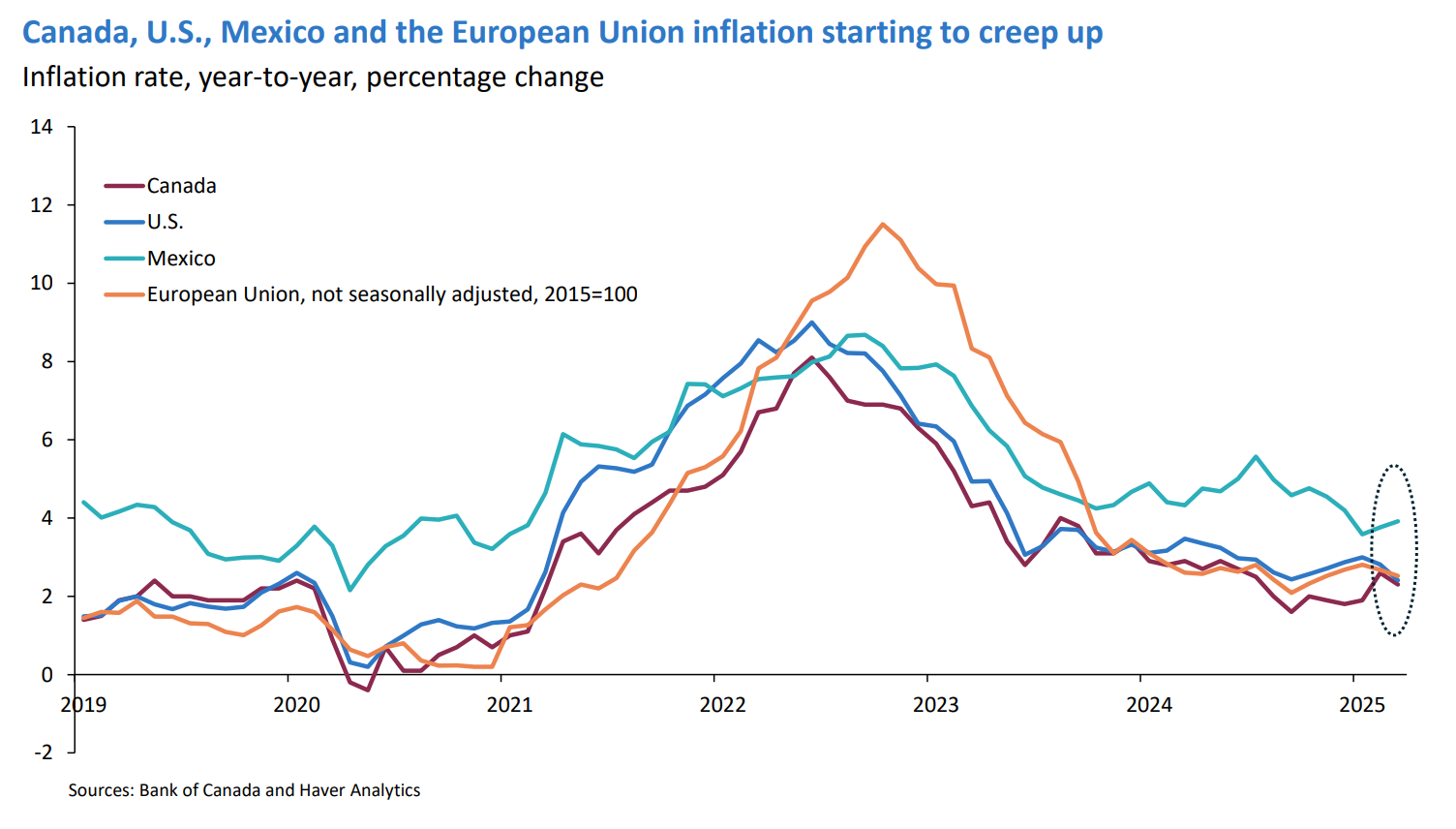
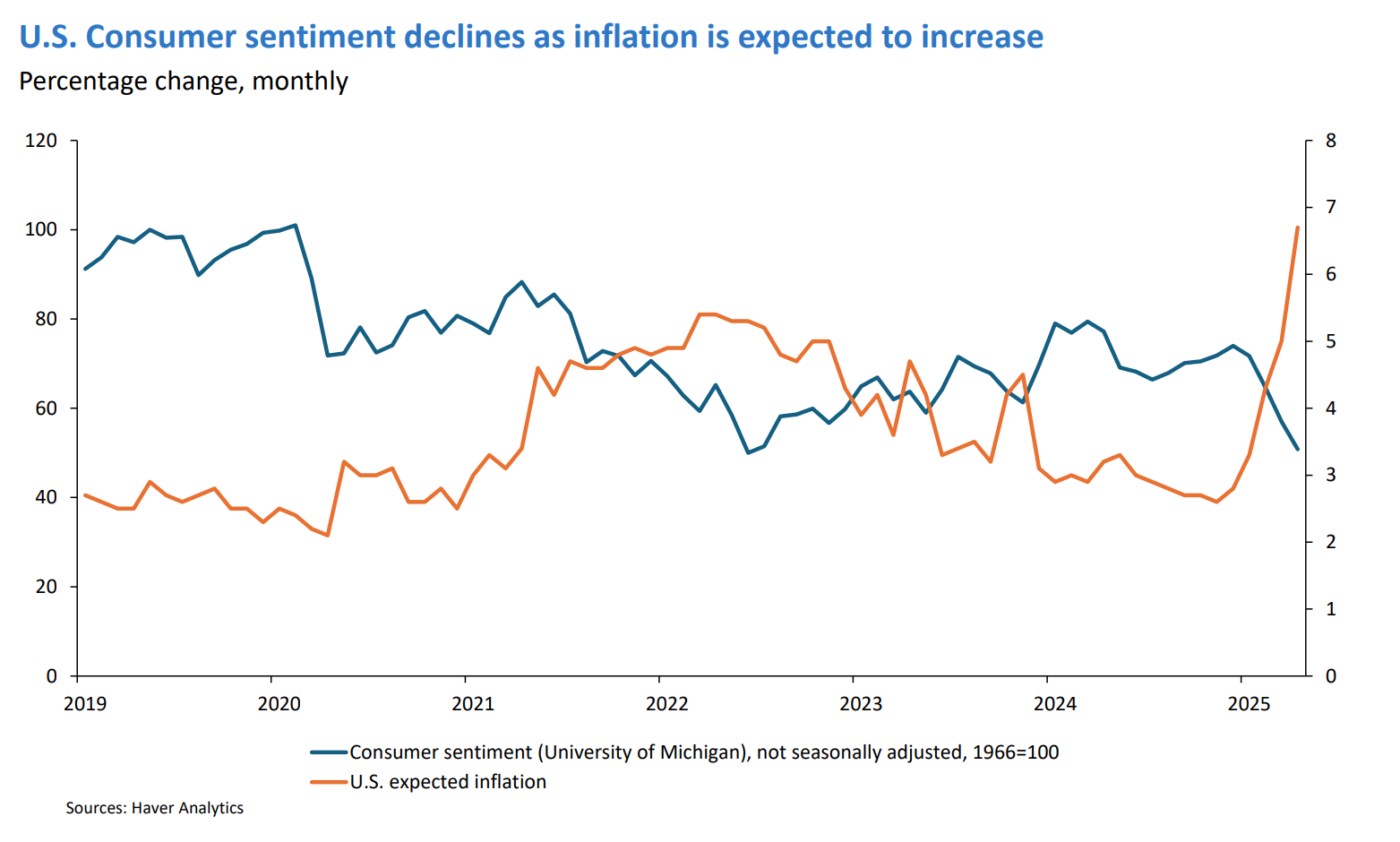
It’s been an unprecedented year for the global economy. With new administrations, many countries are shifting policies to adapt to the evolving global landscape. Central to these changes are heightened trade uncertainty and the slowdown of global trade, reshaping the foundations of economies and trade practices. Amidst this uncertainty, consumer confidence is plummeting. For Canadian businesses, it’s crucial to stay vigilant and be prepared to adapt to these dynamic conditions.
Export Development Canada (EDC) offers several solutions, including market intelligence, the EDC Trade Impact Program and business connections, to support Canadian companies in their global expansion. For Canadian exporters who need to mitigate risk, EDC offers financial and risk management solutions and tools, including the Country Risk Quarterly.







